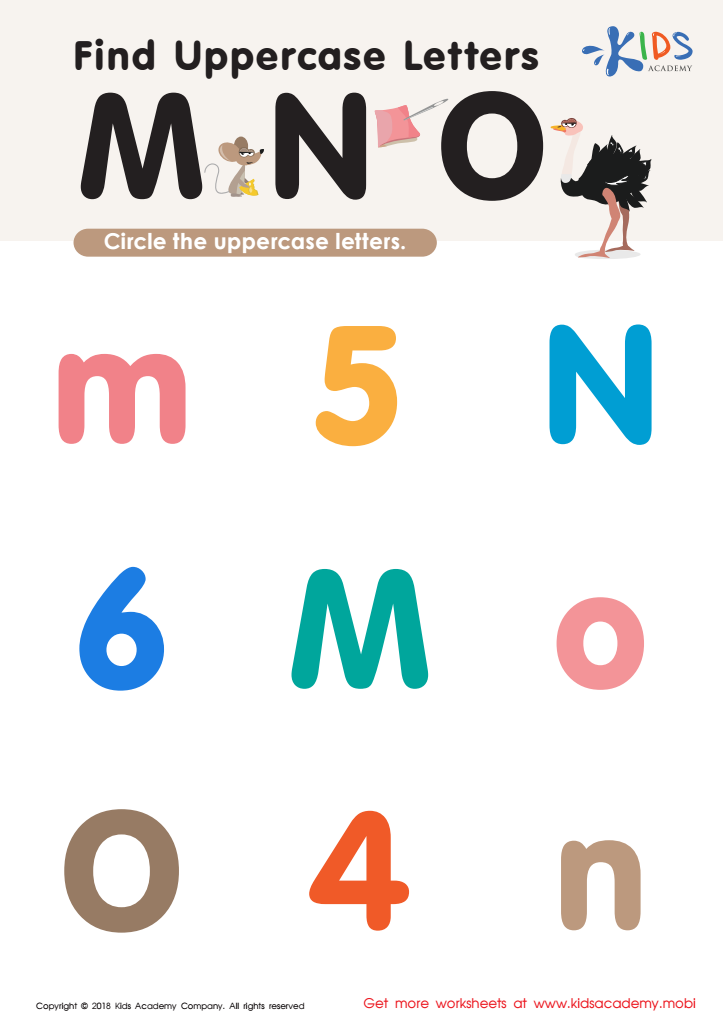Uppercase identification Alphabet Worksheets for 5-Year-Olds
5 filtered results
-
From - To
Introducing our Uppercase Identification Alphabet Worksheets for 5-year-olds, designed to make learning fun and engaging! These printable worksheets help young learners recognize uppercase letters through colorful illustrations and entertaining activities. Each worksheet encourages kids to trace, identify, and match uppercase letters, building essential early literacy skills. Ideal for preschool and kindergarten environments, our resources support visual learning and enhance memory retention. Parents and teachers can easily download and print these worksheets, providing limitless opportunities for practice at home or in the classroom. Foster a strong foundation in reading and writing with our creative and educational uppercase identification worksheets today!


Find Uppercase Letters Worksheet


Find Uppercase Letters J, K, and L Worksheet


Find Uppercase Letters A, B, and C Worksheet


Find Uppercase Letters V, W, X Worksheet


Find Uppercase Letters M, N, and O Worksheet
Uppercase letter identification is a fundamental skill for 5-year-olds, as it forms the backbone of literacy development. Parents and teachers should prioritize this milestone for several key reasons. Firstly, recognizing uppercase letters is crucial for early reading skills; these letters appear frequently in books, signs, and everyday print. By mastering uppercase identification, children gain confidence and a familiarity with written language, which enhances comprehension and word recognition.
Secondly, uppercase letters are essential for writing and spelling. Many children begin writing their names and simple words using uppercase letters. Understanding their shapes and sounds allows young learners to express themselves and engage in creative activities, further enhancing their communication skills.
Moreover, uppercase identification sets the stage for learning lowercase letters, paving the way for comprehensive literacy development. This foundational skill supports various learning areas and fosters a love for reading and writing from an early age.
Finally, engaging with uppercase letters offers enjoyable opportunities for interactive learning. Games, songs, and hands-on activities make the process fun, improving retention and motivation. By emphasizing uppercase letter identification, parents and teachers cultivate a positive learning environment, ensuring children are well-prepared for their educational journey ahead.
 Assign to My Students
Assign to My Students














